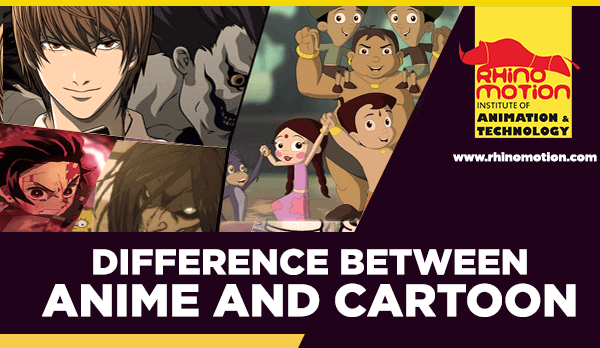Is anime and cartoon different?
Yes, anime and cartoon are different, although they share some similarities.
Anime and cartoons are two forms of animation that have distinct differences in terms of their visual style, themes, production, and distribution. Animation, in general, is a technique that involves creating the illusion of movement by rapidly displaying a series of static images, and it has become a popular medium for storytelling and entertainment around the world. However, despite sharing a common technique, anime and cartoons have their own unique characteristics that make them different from each other.
Visual Style
One of the most noticeable differences between anime and cartoons is their visual style. Anime is known for its distinct character designs, which often include large eyes, exaggerated facial expressions, and colorful hair and clothing. In contrast, cartoons tend to have a simpler and more exaggerated style, with characters having more rounded shapes and basic features. Anime also often features more detailed backgrounds and settings, with an emphasis on creating a realistic and immersive world for the story to take place in.
Themes and Storytelling
Another major difference between anime and cartoons is the type of themes and storytelling that they explore. Anime often delves into complex and mature themes such as violence, sexuality, and psychological trauma. The storylines can be multi-layered, with intricate plots that span multiple episodes or even entire seasons. Cartoons, on the other hand, tend to focus more on comedy, slapstick humor, and light-hearted storylines that are targeted towards children. While there are certainly exceptions to this rule, it is generally true that anime is aimed at a more mature audience than cartoons.
Production and Distribution
Anime is primarily produced in Japan, with many studios and production companies dedicated solely to creating animated series and films. The production process for anime is highly structured, with a large team of animators, voice actors, and writers working together to create a cohesive and engaging story. Once the anime is produced, it is typically distributed through streaming services, DVDs, or Blu-rays, with many fans around the world eagerly anticipating the latest releases.
Cartoons, on the other hand, are produced in various countries around the world, including the United States, Europe, and Asia. The production process for cartoons can vary greatly depending on the country and studio producing the content. Cartoons are typically distributed through television networks, streaming services, or home video releases.
Difference and similarities between anime, cartoon and animation
Anime, cartoon, and animation are all terms used to describe moving images that are created through the process of animation. However, there are some key differences and similarities between these terms that are worth exploring.
Animation is a broad term that encompasses any kind of moving image that is created through animation techniques. This can include everything from hand-drawn cartoons to computer-generated imagery (CGI) to stop-motion animation. Animation can be created for a variety of purposes, from entertainment to education to advertising.
Cartoons are a specific type of animated content that is often associated with humor and whimsy. Cartoons are typically aimed at children, but there are also many adult-oriented cartoons that deal with more mature themes. Cartoons can be created using a variety of animation techniques, but they are typically characterized by their bright colors, exaggerated character designs, and simple storytelling.
Anime, on the other hand, refers specifically to Japanese animated content. Anime is characterized by its unique art style, which often features large eyes, small mouths, and distinctive hair styles. Anime can cover a wide range of genres, from action and adventure to romance and drama. While anime is often associated with Japanese culture, it has gained a global following and has become popular around the world.
So, what are the similarities between these terms?
- All three mediums use animation techniques to create moving images.
- They can be used for entertainment, education, advertising, and other purposes.
- They are designed to engage the viewer through visuals and sound.
However, there are also some key differences between these terms.
- Anime is a specific type of animation that originates from Japan, while cartoons and animation are not tied to any specific country.
- Anime has a unique art style that often features large eyes, small mouths, and distinctive hair styles, while cartoons and animation can have a variety of art styles.
- Anime covers a wide range of genres, from action and adventure to romance and drama, while cartoons are often associated with humor and whimsy and animation can encompass a wide range of genres.
- Anime is often associated with Japanese culture, while cartoons and animation can be found in many cultures around the world.
- Anime is often targeted at a more mature audience, while cartoons are often aimed at children, although there are exceptions in both cases.
Anime, cartoon, and animation share many similarities in that they are all forms of visual storytelling that use animation techniques to create moving images. However, they differ in terms of their origins, art styles, genres, and target audiences. By understanding the similarities and differences between these mediums, we can better appreciate the diversity of the world of animation.




